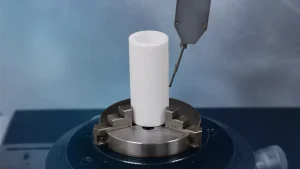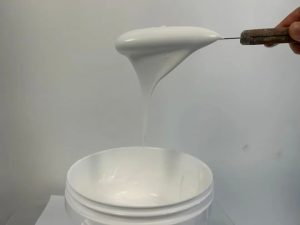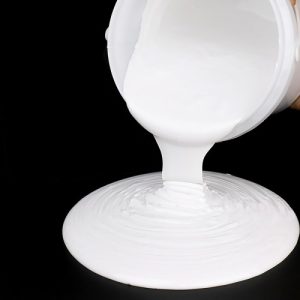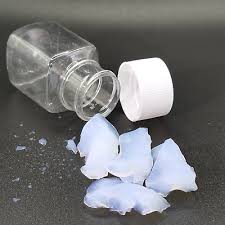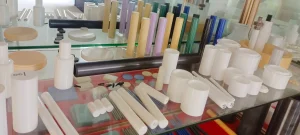Professional industry ceramic supplier, silicon nitride, silicon carbide, aluminum nitride and any other kinds of ceramics.
1. Introduction
Just 24 hours ago, a major materials science lab in Germany reported a breakthrough: they successfully melted rare-earth metals at 2,800°C using a custom-designed silicon carbide crucible that didn’t so much as crack a smile—let alone a seam. This isn’t just lab gossip; it’s proof that when extreme heat shows up, silicon carbide crucibles are the bouncers at the door.
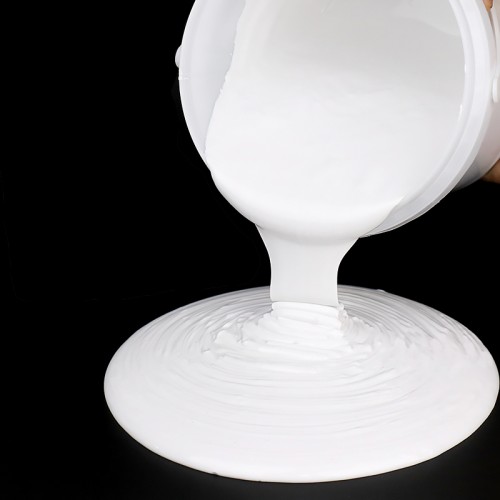
Silicon carbide crucibles aren’t your grandma’s clay pots (unless your grandma worked in aerospace). These advanced ceramic workhorses combine durability, thermal shock resistance, and chemical inertness like few materials can. And yes—they’ve even wandered into your kitchen as silicon carbide ceramic baking dishes and dinner plates. Who knew science could serve casserole?
2. What Exactly Is a Silicon Carbide Crucible?
A silicon carbide crucible is a container made from silicon carbide (SiC)—a compound of silicon and carbon—that’s engineered to withstand brutal temperatures, corrosive environments, and rapid heating cycles. Think of it as the Iron Man suit of labware.
Unlike traditional alumina (Al2O3) or zirconia crucibles, silicon carbide crucibles offer superior thermal conductivity and mechanical strength. They’re sintered, reaction-bonded (RBSiC), or nitride-bonded to achieve specific performance traits for everything from metal casting to semiconductor production.
3. Why Silicon Carbide? The Superpowers Explained
3.1 Thermal Shock Resistance That Would Make Ice Look Weak
Drop a red-hot silicon carbide crucible into cold water? It might raise an eyebrow—but it won’t shatter. This material laughs in the face of thermal shock, making it ideal for processes requiring rapid temperature changes.
3.2 Chemical Inertness: Not Even Molten Metal Can Get Under Its Skin
Whether you’re melting aluminum, copper, or exotic alloys, a silicon carbide crucible stays stoic. It resists oxidation and doesn’t react with most molten metals—unlike some ceramics that dissolve faster than your New Year’s resolutions.
3.3 Strength Meets Lightweight Design
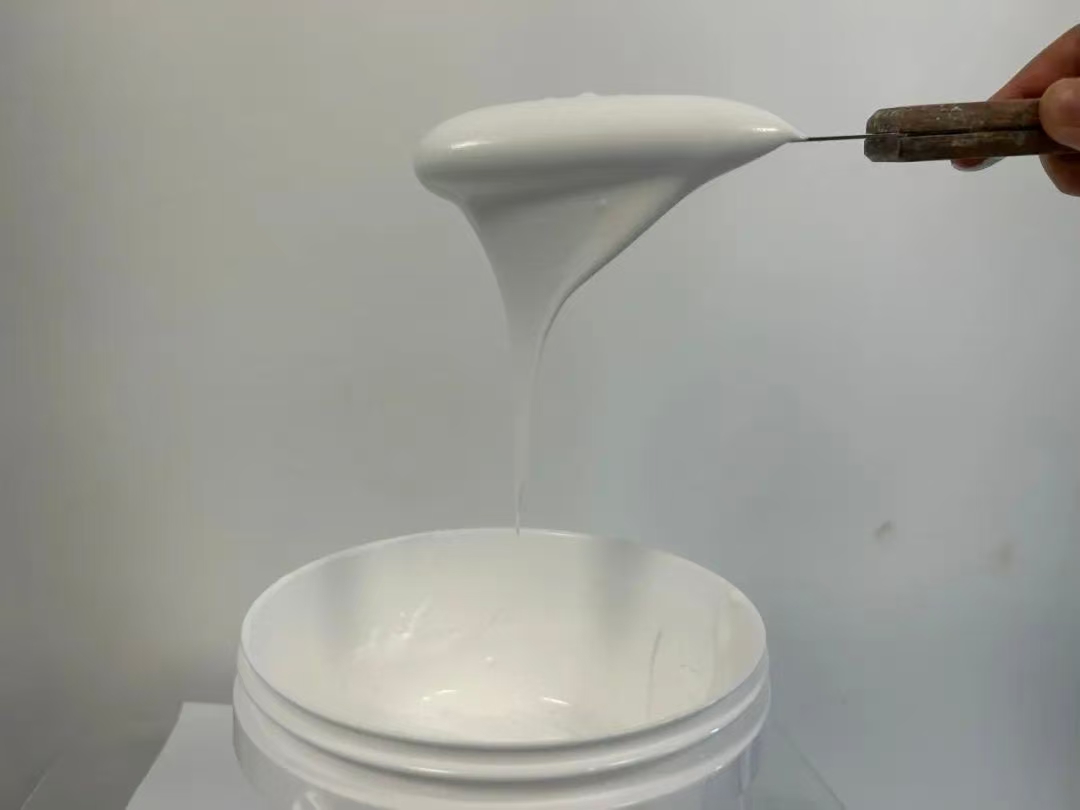
Despite its toughness, silicon carbide is lighter than many refractory alternatives. That means easier handling, lower shipping costs, and fewer gym memberships for lab technicians.
4. Boron Carbide vs Silicon Carbide: The Ultimate Showdown
Now, let’s settle this once and for all: boron carbide vs silicon carbide. Boron carbide (B4C) is harder—great for armor and abrasives—but brittle and expensive. Silicon carbide? Tougher in thermal cycling, more cost-effective, and far more versatile across industries.
- Boron carbide: elite bodyguard, but only for very specific VIPs.
- Silicon carbide: the reliable Swiss Army knife that also doubles as a frying pan.
For crucibles, furnace linings, or even silicon carbide ceramic tiles in high-wear zones, SiC wins by a landslide.
5. Beyond the Lab: Silicon Carbide in Your Home
Yes, really. That sleek silicon carbide ceramic dinner plate on your table? Same family. Manufacturers now use advanced ceramic techniques to create silicon carbide ceramic baking dishes, casserole dishes with lids, butter dishes, salad bowls, and even Christmas platters.
These aren’t just pretty—they’re oven-safe up to 1,400°C (though your turkey probably isn’t). You’ll find everything from silicon carbide white ceramic plates to black ceramic plates, handcrafted pasta bowls, and ramekins that double as tiny fortresses for crème brûlée.
And no, despite internet rumors, ceramic cookware dangers are largely myths—especially with high-purity silicon carbide, which doesn’t leach toxins. So go ahead: bake that pie in your silicon carbide ceramic pie dish with peace of mind.
6. Industrial Cousins: From Pipes to Burners
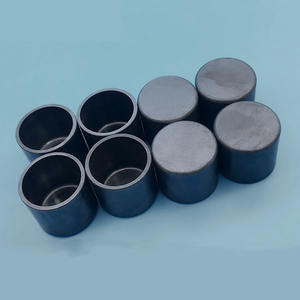
The silicon carbide family tree is vast. Need a furnace component? Try silicon carbide ceramic tubes for high temperature or thermocouple protection tubes. Running a glass plant? Silicon carbide burner nozzles and mullite tubes keep things flowing smoothly.
Plumbing got you down? Silicon carbide ceramic piping resists corrosion better than your ex avoids texts. And for precision control, silicon carbide ceramic disc taps and quarter-turn valves offer leak-proof reliability.
Even grinding gets a SiC upgrade: silicon carbide diamond grinding discs for pottery and sanding discs make short work of tough materials—without wearing out faster than your patience during IKEA assembly.
7. Silicon Nitride: The Cool Sibling
Don’t confuse silicon carbide with its nitrogen-based cousin, silicon nitride (Si3N4). While both are advanced ceramics, silicon nitride excels in fracture toughness and is often used in custom silicon nitride heat shields, insulating rings, and yes—even silicon nitride crucibles from specialized factories.
High purity silicon nitride powder market demand is rising, especially in aerospace and medical implants. But for raw heat endurance? Silicon carbide still wears the crown.
8. Choosing the Right Crucible: A Quick Guide
Not all silicon carbide crucibles are created equal. Consider:
- Application: Metal melting? Semiconductor processing? Artisanal chocolate tempering? (Okay, maybe not the last one.)
- Bonding type: RBSiC (reaction-bonded) offers great thermal shock resistance; nitride-bonded suits oxidizing atmospheres.
- Purity: Higher purity = fewer contaminants in your melt.
And if you need structural support, don’t overlook rbsic silicon carbide tile blocks or silicon carbide ceramic columns—they’re the unsung heroes holding up high-temp systems worldwide.
9. Conclusion
From the heart of a foundry to your holiday dinner table, the silicon carbide crucible—and its extended ceramic family—proves that advanced materials can be both incredibly tough and surprisingly elegant. Whether you’re sourcing a zirconia crucible for comparison or eyeing silicon carbide ceramic serving bowls for your next dinner party, one thing’s clear: silicon carbide isn’t just surviving the heat—it’s thriving in it.
Our Website founded on October 17, 2012, is a high-tech enterprise committed to the research and development, production, processing, sales and technical services of ceramic relative materials such as Master. Our products includes but not limited to Boron Carbide Ceramic Products, Boron Nitride Ceramic Products, Silicon Carbide Ceramic Products, Silicon Nitride Ceramic Products, Zirconium Dioxide Ceramic Products, etc. If you are interested, please feel free to contact us.

